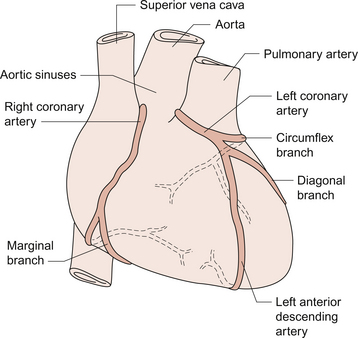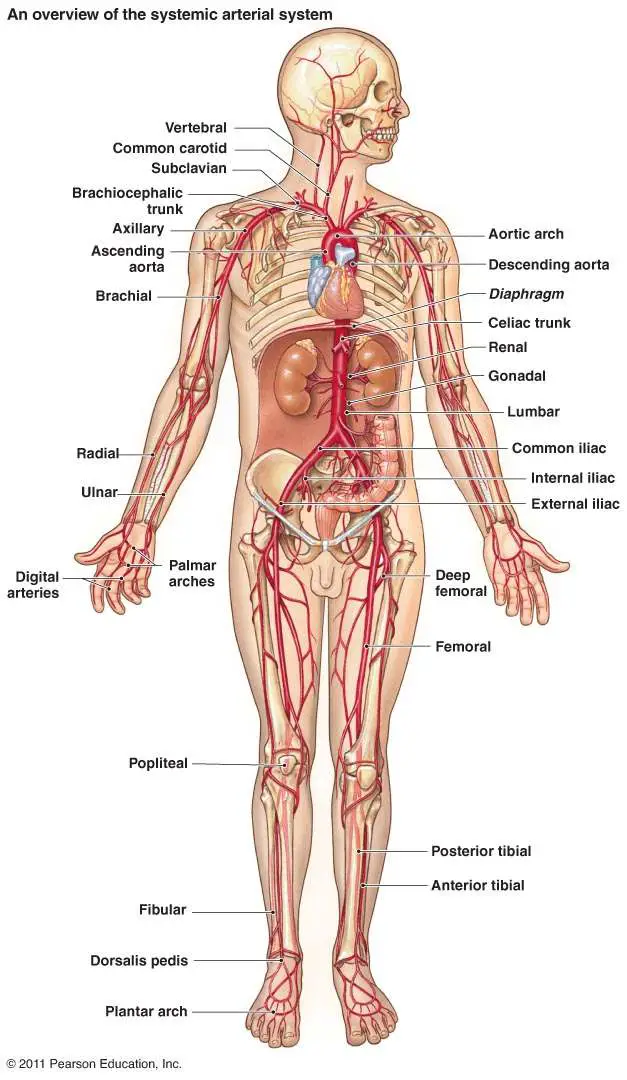Major Blood Vessel Chart | Veins return blood back toward the heart. Malnutrition, vitamin deficiencies, anemia (lowered ability to carry blood vessels). The five types of blood vessels are (in order of circulation): High, normal and low blood pressure are defined. Allows diffusion of gases and nutrients from blood into the body cells.
Blood flows throughout the body tissues in blood vessels, via bulk flow (i.e., all constituents together and in one direction). The main vessels that run through the neck are the external jugular vein (and its tributaries), the internal jugular vein (and its tributaries), and the common carotid artery, which then splits into the internal and external carotid arteries (whic. How well do you know the anatomy here? Major blood vessels, blood vessels. Arterioles connect with even smaller blood vessels called capillaries.

Carry blood towards the heart (usually deoxygenated blood, except for the pulmonary vein). The five types of blood vessels are (in order of circulation): This is a graph of bmi categories based on the world health organization data. Arteries transport blood away from the heart. Blood is oxygenated in capillaries that flow through the alveoli of the lungs. Create a flow chart showing the major systemic arteries through which blood travels from the aorta and its major branches. High, normal and low blood pressure are defined. Normal blood pressure range chart, with comments about each blood pressure level. Major blood vessels, blood vessels. Oxygenated blood is then returned to the left atrium of the heart by four pulmonary although the internal carotid a. Mind melds could cause pressure changes in a subject's nerves and blood vessels, something which spock cautioned simon van gelder about before beginning a meld with him in 2266. Hma practical 3 virtual slides. The aortic and pulmonic valves lie between the ventricles and the major blood vessels leaving the heart.
Blood vessels are the body's highways that allow blood to flow quickly and efficiently from the heart to every region of the body and back again. The main vessels that run through the neck are the external jugular vein (and its tributaries), the internal jugular vein (and its tributaries), and the common carotid artery, which then splits into the internal and external carotid arteries (whic. How well do you know the anatomy here? Blood is oxygenated in capillaries that flow through the alveoli of the lungs. The arteries are major blood vessels connected to your heart.

The coronary arteries are the other important arteries attached to the heart. Supplies the posterior brain, blood supply to the entire brain is. Blood carried by arteries is usually highly oxygenated, having just left the lungs on its. Major blood vessels, blood vessels. They also happen to correlate much more loosely to those. Arterioles connect with even smaller blood vessels called capillaries. The heart and blood vessels. The carotid system of arteries and the jugular system of veins. The arteries are major blood vessels connected to your heart. The goal is to produce just two sets of numbers that can be used to quickly and easily see what vessels are best at completing company contracts efficiently. Attaches vessel to neighboring structures. The blood vessels are the components of the circulatory system that transport blood throughout the human body. A blood vessel is any of the tubular channels that convey blood throughout the body, whether arteries (including threadlike arterioles) that convey blood away from the heart, veins (including threadlike venules) that convey blood toward the heart, or the tiny capillaries that connect arterioles and venules.
Blood carried by arteries is usually highly oxygenated, having just left the lungs on its. The coronary arteries are the other important arteries attached to the heart. The five types of blood vessels are (in order of circulation): Arteries transport blood away from the heart. Veins return blood back toward the heart.

The arteries are major blood vessels connected to your heart. Blood vessels are often named after either the region of the body through arteries are blood vessels that carry blood away from the heart. Carry blood towards the heart (usually deoxygenated blood, except for the pulmonary vein). There are three major types of blood vessels: From there, blood passes through major arteries, which branch into muscular arteries and then. The left ventricle of the heart pumps oxygenated blood into the aorta. This page provides histology support information for blood vessel structure. Blood vessels were part of the circulatory system and functioned to transport blood throughout humanoid bodies. The five types of blood vessels are (in order of circulation): Arterioles connect with even smaller blood vessels called capillaries. A blood vessel is any of the tubular channels that convey blood throughout the body, whether arteries (including threadlike arterioles) that convey blood away from the heart, veins (including threadlike venules) that convey blood toward the heart, or the tiny capillaries that connect arterioles and venules. Major blood vessels, blood vessels. The heart and blood vessels.
Major Blood Vessel Chart! Identify the vessels through which blood travels within the pulmonary circuit, beginning from the right ventricle of the heart and ending at the left atrium.
Referencia: Major Blood Vessel Chart